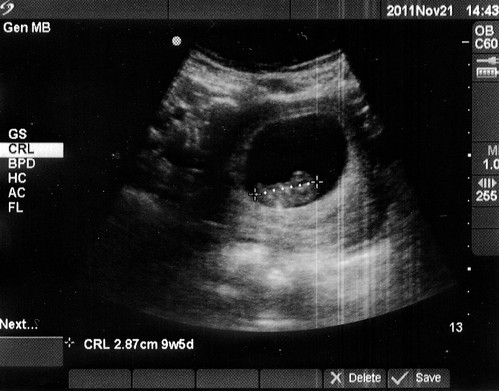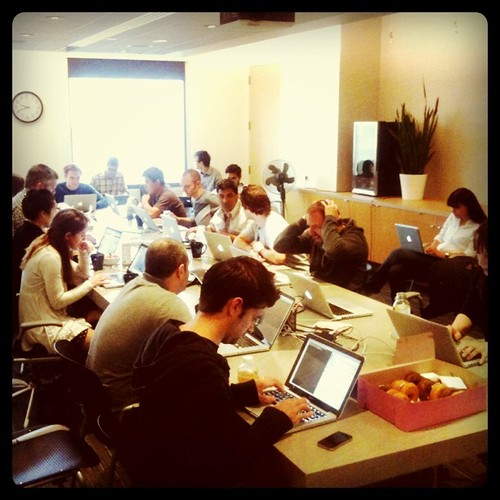After my last post people kept sending in more things, and I keep discovering more from following the leads they give me. The topic also has a deep academic history, which I should have guessed. I thought I'd wrap up here with a quick summary before moving on.
A friend Matt pointed me at a 2005 New York Times article entitled "Why Vote?". It's fascinating and worth a read, but the bit about "your chances of winning a lottery and of affecting an election are pretty similar" is demonstrably false, as shown in the last post: fact is that you're trillions upon trillions of times more likely to win the lottery than to affect an election.
As mentioned (and misattributed) in the article, Anthony Downs, the pre-eminent economist and political scientist, in his 1957 work "An Economic Theory of Democracy", concluded that "a rational individual should abstain from voting". This, "Downs's Paradox" can be stated as
In voting, compute the benefits (B) of having one's candidate win and weight them by the infinitesimal probability (P) that one's vote will be decisive. Then, since voting is costly (takes time, mainly), calculate the overall reward (R), proportional to the probability of actually turning out, as R = P×B - C. Because P is so small, this will be negative for almost any positive C. Thus, no rational individual should vote.And yet supposedly rational people do in fact vote—hence the paradox.
Some attempts to resolve this issue have introduced a new term, D, to the equation, representing the reward one gets from expressing oneself, participating generally in the democratic process, or fulfilling an endogenous sense of civic duty. Then the reward and probability of turning out becomes R = P×B - C + D which may be positive even for minuscule P, explaining the empirically observed turnout.
This leads us to the research on the Swiss system which is referenced by the Times article. In that paper Patricia Funk postulates another factor contributing to the term D: that of exogenous social pressure to vote. From the paper,
The key innovation of this paper is to use a natural experiment, which allows me to shed light on this particular motivator to vote: the introduction of optional mail voting in Switzerland.
The intuition behind this experiment lies in the opposite effects, postal voting (or other modern voting tools such as internet voting) have on economic and social incentives to vote. Concerning the first, the obvious effect is a reduction in voting costs, with a positive effect on turnout. Secondly, mail-in or internet voting renders the voting act unobservable. If social pressure matters for voting decisions, the presence of mail-in ballots provides an opportunity to escape. Therefore, the more social concerns matter for voting decisions, the more distinctive the mail ballot system’s trade-off between cost reduction and a reduction in social incentives.
While previous voting models cannot easily account for a negative turnout effect of mail-in or internet voting alternatives, a positive turnout effect is consistent with both traditional voting models and with those that include a concern for social motives. The sharpest test for social pressure arises from looking at the effect of postal voting in different-sized communities. A large number of anthropological studies have documented that social control is particularly strong in small and close-knit communities. People know each other and gossip about who does their civic duty and who does not. Therefore, the relief from social pressure is supposedly the highest in small communities and ceteris paribus, also this negative "social effect" on turnout.
What the study found was that the reduction in voting cost afforded by the opportunity to vote by post didn't result in any statistically significant increase in turnout. In fact,
Turnout declined up to 7 percentage points in the [administrative division] with the highest share (i.e. 36%) of citizens living in small communities. A replication of the same procedure with community-level data confirms that the turnout decrease was particularly a “small-community”-phenomenon.
That is to say, once the Swiss were no longer obligated by the social pressure in close-knit communities to show their faces at the polling places, they didn't.
Smart.
One final note from my friend Andrew, who pointed me at the Asimov short story "Franchise" in which
the computer Multivac selects a single person to answer a number of questions. Multivac will then use the answers and other data to determine what the results of an election would be, avoiding the need for an actual election to be held.
I couldn't find an ebook so I ordered the paperback. Sounds like a good read.
Update 9.37pm December 30th: I couldn't leave it alone. Two final points, and then changing topic:- Read Hannah's comment on the original post. It brings in Toqueville, about whom I now feel I should be more educated and you might too.
- I also wanted to add a super thought experiment which Robin threw in: what if government representatives themselves were simply chosen at random from the electorate? "It's super-duper jury service. Which, as an analogy, I realize, does not exactly fill a person with optimism," he writes but of course you've got to think past the implementation difficulties. Personally I'm pretty sure it'd be utter chaos in the short term but in the long term I figure the infrastructure surrounding these hapless "politicians" would adapt to the new regime. Probably they'd make it like the last.
































































